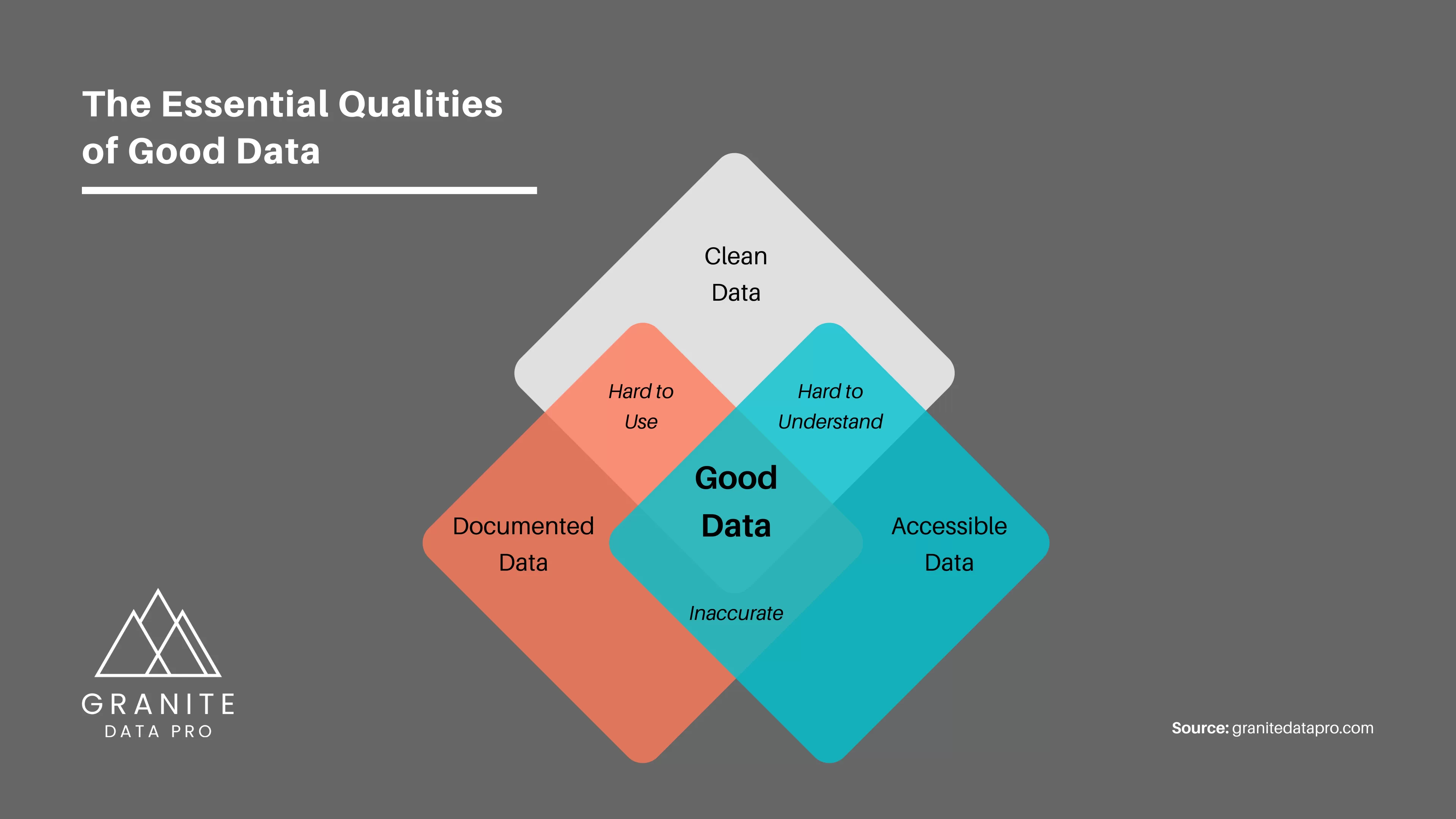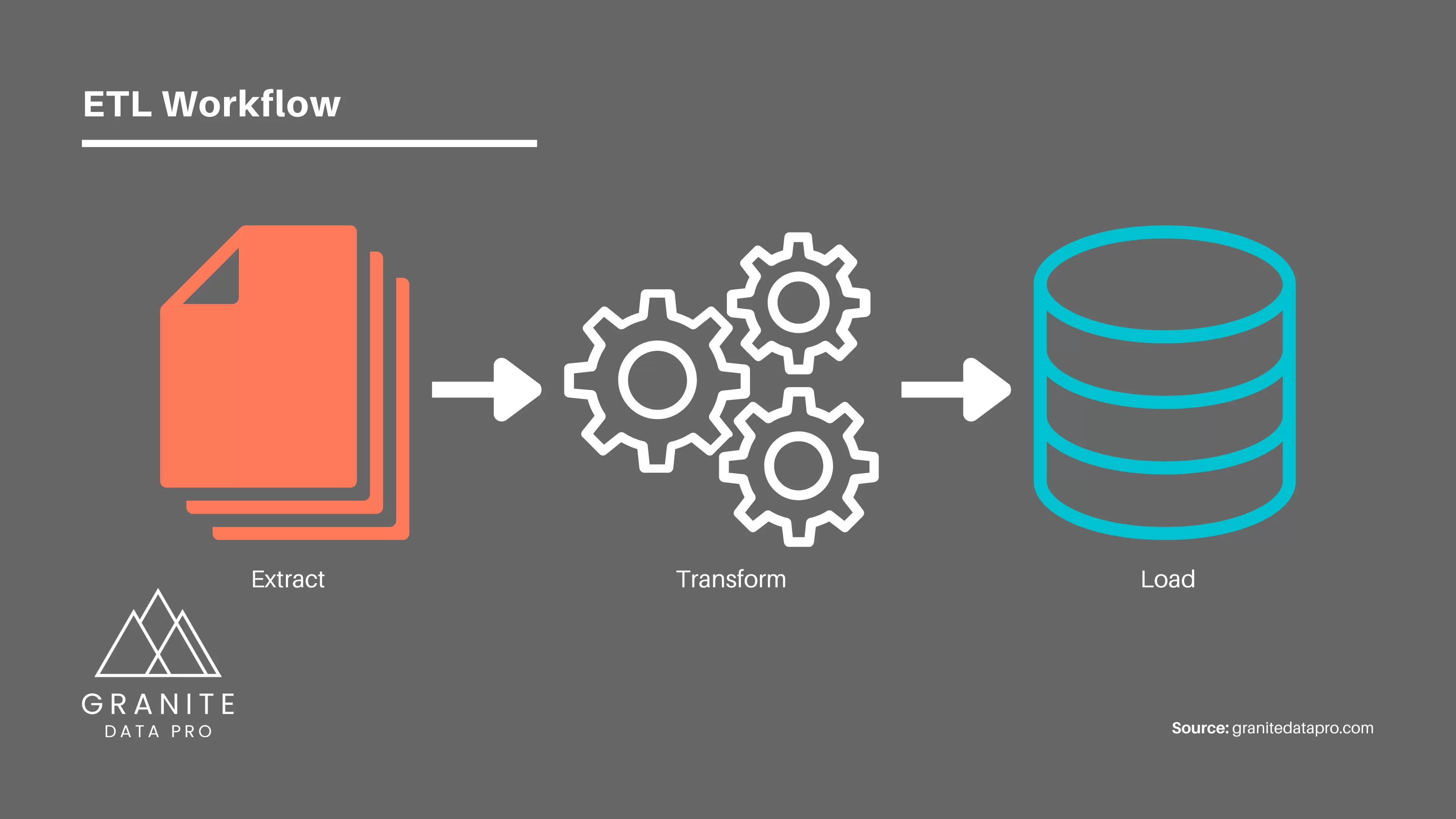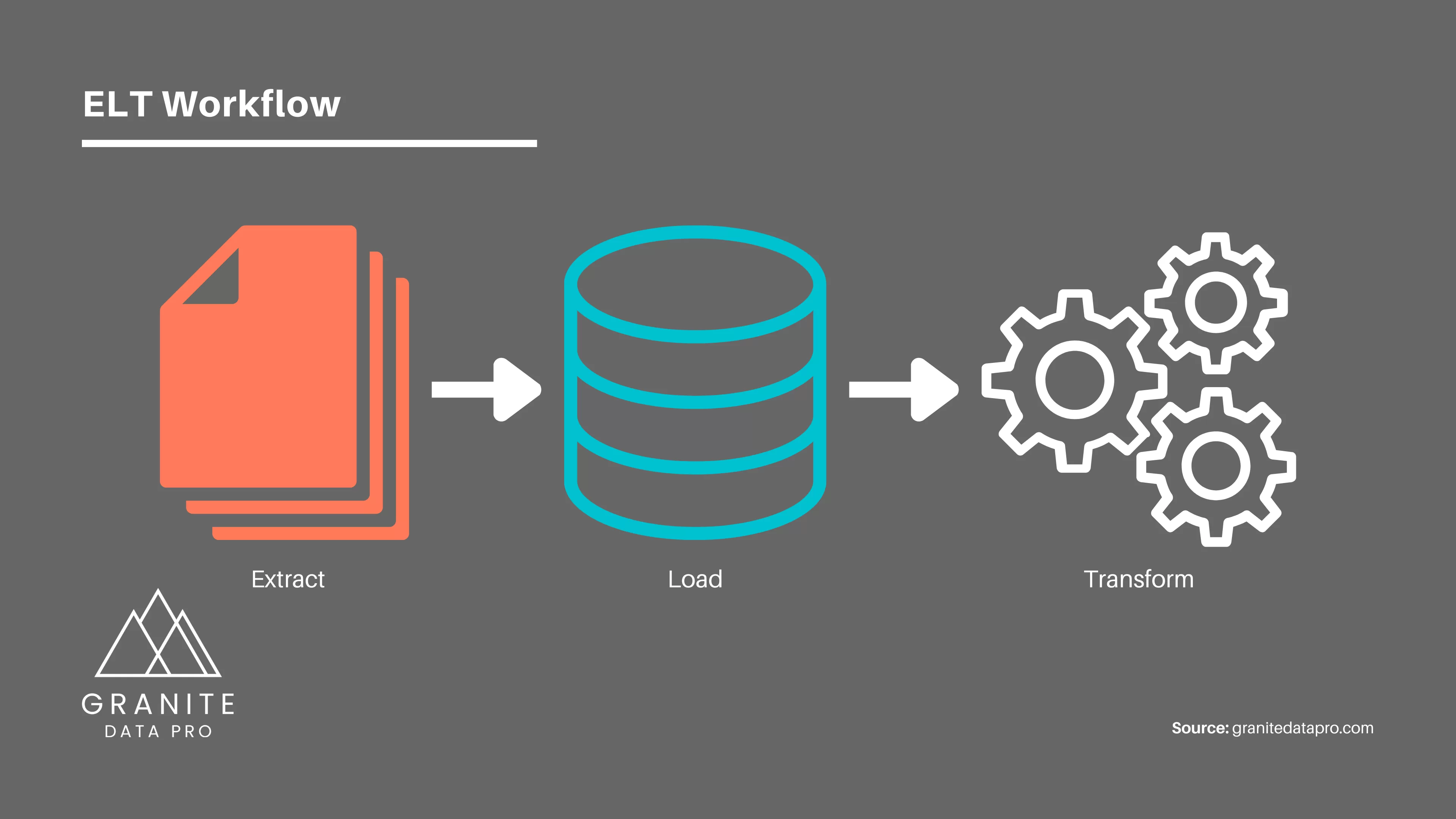For modern media companies and publishers, data is more than just numbers and charts — it’s a critical tool for audience insights, monetization strategies, and decision-making. Not all data is equally valuable though. Many publishers struggle with inconsistencies, siloed systems, and data that’s difficult to access and act upon. What media teams really need is good data.
In this post, we’ll explore what “good data” looks like for publishers and why having clean, accessible, and well-documented data is essential for every department. We’ll also dive into how a centralized data warehouse, supported by robust data pipelines, addresses these needs, creating a reliable source of truth that turns data into a strategic asset. Whether it’s real-time audience data for sales, intuitive segmentation for marketing, or consistent definitions across departments, good data transforms how media companies operate and grow.
1. What is Good Data?
Good data has three essential qualities: it’s clean, it’s well-documented, and it’s highly accessible.
- Clean and Error-Free: Clean and error-free data is accurate and free of duplicates, missing values, or inconsistencies. Clean data leads to better analysis, more trustworthy insights, and fewer errors across departments.
- Well-Documented: Clear, standardized definitions mean there’s no ambiguity about what values represent. When everyone understands what terms like “engagement” or “active user” mean, teams can make decisions with confidence and consistency.
- Highly Accessible: Finally, good data is accessible across the organization. This means everyone — from sales and marketing to editorial and product teams — can access relevant details in a timely way. This enables data-driven decision-making and reduces reliance on specialized analytics teams for basic insights.
By ensuring quality, clarity, and accessibility, media companies position themselves to make better decisions, collaborate seamlessly, and ultimately generate higher revenue.

2. Why Data Matters to Publishers
The media industry is constantly evolving, driven by changes in technology, audience behavior, and content consumption patterns. Here’s how “good data” addresses core challenges that media companies face:
- Supporting Sales with Reliable Audience Insights: In media sales, credibility can make or break a deal. Sales teams need precise, real-time audience metrics to pitch and close deals effectively. For example, if an advertiser asks for demographic insights on a particular segment, sales needs to respond with accurate data. Good data makes these insights immediately available, strengthening the sales pitch.
- Empowering Marketing with Easy Segmentation: Marketing teams rely heavily on segmentation to create targeted campaigns that resonate with specific audiences. When data is clean and accessible, marketers can easily segment audiences by age, interests, engagement levels, and more. This allows for refined targeting, improving ad performance and customer engagement.
- Standardizing Data for Consistent Reporting: Inconsistent metrics or definitions can lead to reporting errors, misalignment, and even lost revenue. Good data ensures that everyone has a shared understanding of what metrics mean. This alignment prevents reporting errors, reduces confusion, and enhances interdepartmental collaboration.
3. How a Centralized Warehouse Solves the Challenge
A centralized warehouse, coupled with robust ETL processes, goes a long way toward setting the foundation for good data within any organization. As publishers expand their digital footprints, they need to unify sources like web, social media, and audience platforms. A central store of this information means it’s ready for departments like sales and marketing to leverage without confusion. By using the right approach, your company can access relevant, quality information at any time.
Let’s break down the components of this system and how they support a cleaned, accessible, and standardized strategy.
Data Warehouse: The Central Hub
A data warehouse aggregates from various sources (web analytics, subscriptions, social, and more) into a central repository. With everything in one place, the company has a single source of truth. This eliminates the need for individual departments to maintain separate datasets. Here’s why a central hub is invaluable:
- Consistency: A single repository ensures that all departments are pulling from the same source, reducing discrepancies across reports.
- Historical Access: A warehouse maintains historical information, making it easier to observe trends and access past queries.
- Enhanced Security and Control: When everything is centralized, it’s easier to monitor access and secure sensitive information. IT & security teams can establish permissions, encryption, and other security protocols more effectively.
ETL and ELT: Powering Reliable, Actionable Data for Media Companies
For media companies today, having reliable, high-quality reporting is essential to making informed decisions and staying competitive. ETL (Extract, Transform, Load) and ELT (Extract, Load, Transform) are two key processes that enable companies to generate valuable insights. Using ETL, ELT, or a combination of both will ensure your data is accessible, accurate for your teams.
Here’s a closer look at what each approach offers, along with examples of how they can directly benefit your organization.
ETL: The Choice for Consistency and Control
In an ETL process, data is carefully refined and standardized before it even reaches the warehouse. Here’s how this approach supports a media company:
- Reliable and Clean: Since everything is processed upfront, it’s already clean and standardized by the time it’s available in the warehouse. This is especially valuable if your company is generating reports for advertisers, creating audience segments, or measuring content engagement. Consistent, ready-to-use data makes a difference in these areas.
- Regulated and Controlled: ETL is particularly useful for organizations that operate in regulated environments or need strict controls. When reporting consistent metrics is critical, ETL ensures that all details follow the same standards.
For media companies focused on delivering precise and reliable insights quickly, ETL can provide the foundation needed to consistently meet audience and advertiser expectations.

ELT: Flexibility and Speed for Today’s Data Needs
The ELT process takes a different approach: data is loaded directly into the warehouse before being refined. With the growth of cloud storage, ELT has become a popular choice for companies dealing with large/complex datasets.
- Faster Access: By loading data first, your teams can quickly access information in its raw form. ELT is ideal when speed is a priority. For example, editorial teams can explore audience engagement insights on new content almost instantly. This allows for faster adjustments and real-time audience analytics.
- Flexibility for Innovation: ELT lets teams work with raw data and experiment with different transformations or segmentations. Marketing teams, for instance, may want to test audience segmentation strategies based on engagement or demographics. ELT provides the flexibility to adjust how information is refined based on what your team needs at the moment.
For media companies aiming to stay agile and quickly respond to changing audience behaviors, ELT offers a more flexible and exploratory approach.

Infrastructure as a Strategic Investment
Ultimately, ETL and ELT are about turning raw data into something meaningful. Media companies that prioritize effective processing strategies have the power to:
- Deliver more precise audience insights that support monetization and drive better ad performance.
- React quickly to audience trends and adjust content strategies to engage readers in real-time.
- Build lasting trust with advertisers by reporting metrics that are consistent, transparent, and accurate.
With the right processing strategy, your company can gain a competitive edge, delivering high-quality information where and when it’s needed. Granite Data Pro provides the expertise to guide your roadmap. We ensure that your infrastructure supports your strategic goals — whether that means the stability of ETL, the flexibility of ELT, or a mixed solution that uses both.
4. Real-Life Applications for Media Companies
Here’s how clean, accessible insights transforms everyday operations for publishers:
Track Day: Precision Targeting, High-Octane Results
Imagine this: Porsche is planning an exclusive track day at the Porsche Experience Center in Atlanta, Georgia, a one-of-a-kind event for high-net-worth individuals who share a passion for luxury and performance cars. To make the event a success, Porsche’s marketing team wants to ensure their invite list is precise. They’re looking to reach high-net-worth individuals, located within a 500-mile radius of Atlanta. They’re really interested in those who have shown strong engagement with performance car content. With this goal, Porsche reaches out to a popular car magazine, known for its engaged, affluent readers. Together, they collaborate on designing a multi-channel campaign.

Now, here’s where “good data” makes all the difference. With Porsche’s requirements, the sales rep doesn’t need to wait days or weeks to get answers. Instead, they can immediately tap into reports built on the company’s centralized warehouse. They can pull up real-time audience demographics with just a few clicks. Through clean, well-structured ETL pipelines, the sales rep sees exactly what Porsche is looking for: detailed geo-targeting, income brackets, and behavioral insights that align with Porsche’s target audience.
Turning Insights into Actionable Campaigns
Within minutes, the sales rep compiles an audience profile report. It shows that the magazine has over 30,000 readers who match Porsche’s criteria — high-income individuals located within a 500-mile radius of Atlanta, with a high engagement rate on performance car content across the magazine’s website and social channels.
With this detailed insight, the sales rep can confidently recommend a tailored, high-impact campaign. Using multiple channels to maximize Porsche’s reach, they recommend:
- Email Marketing: Direct emails go out to the most engaged subscribers in the target demographic. The team can send messages that speak to the exclusivity of the event, capturing the attention of Porsche’s ideal audience.
- Social Media Targeting: The magazine leverages its social platforms to showcase content teasers and exclusive event previews. Through a custom audience, they can target users who meet Porsche’s geographic and demographic requirements. Social posts are crafted to appeal to the lifestyle and interests of high-net-worth individuals, maximizing engagement.
- Direct Mail: Finally, a direct mail component adds a tangible, luxury touch. These invites feel as exclusive as the event itself. By pulling postal addresses, the magazine ensures that these high-quality invitations make an impact on those most likely to attend.
Continue Reading: 3 Ways Publishers Are Using The Data Warehouse To Win
5. Long-Term Benefits of Good Data for Strategy and Growth
As illustrated in the examples above, when information is reliable, accessible, and well-documented, it doesn’t just streamline daily tasks — it drives long-term strategy and growth. Here are some other ways that good data strengthens core functions for media companies:
- Strategic Planning: Leadership teams can use accurate data to set KPIs, forecast revenue, and make investment decisions. Good data gives executives the clarity they need to steer the company toward sustainable growth.
- Adaptability to Industry Changes: Media trends shift quickly. Access to high-quality insights allows companies to spot trends early and respond with agility, from testing new content formats to adjusting ad offerings based on consumption patterns.
- Enhanced Audience Understanding: With consistent, detailed reporting on reader behavior, companies can create content, products, and experiences that better resonate with their audience, building brand loyalty and increasing engagement over time.
Key Takeaways:
- Good data enables faster decision-making and improved collaboration.
- Accurate, centralized data reduces errors and creates a consistent foundation for strategy.
- Long-term data-driven strategy enables media companies to stay competitive and agile.
6. How Granite Data Pro Delivers Good Data with Tailored Solutions
At Granite Data Pro, we specialize in transforming data infrastructure for media companies. Our approach begins with a deep understanding of our client’s goals, existing systems, and pain points. From there, we develop customized solutions that centralize, clean, and document their data to create a solid foundation for every department.
- Comprehensive Audits: We start by assessing the current data environment, identifying inconsistencies, gaps, and opportunities for improvement. This ensures our strategy is aligned with our clients’ goals from day one.
- Customized ETL/ELT Pipelines: Our ETL/ELT solutions are tailored to each client’s specific sources and reporting needs, ensuring seamless integration and high quality across all sources.
- Ongoing Support and Optimization: We provide ongoing support, optimizing workflows, addressing emerging needs, and ensuring that data remains clean, consistent, and accessible for all teams.
7. The Road Ahead: Building a Foundation for Data-Driven Success
Good data is a competitive advantage. Publishers that prioritize quality and accessibility are better positioned to innovate, attract advertisers, and deliver personalized audience experiences. With Granite Data Pro as a partner, media companies don’t just solve for today’s needs — they create a foundation that fuels growth, adaptability, and long-term success.
By understanding the importance of “good data” and investing in centralized, clean, accessible data solutions, media companies can unlock the full potential of their data, driving success in an increasingly data-driven world.
Ready to chat?
If you’re ready to upgrade the tech that drives your business forward, we’re here to help.
Ready to chat?
If you’re ready to upgrade the tech that drives your business forward, we’re here to help.